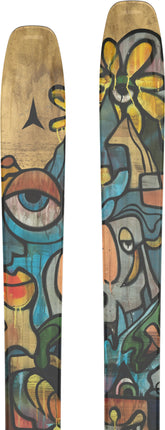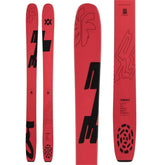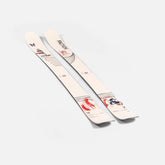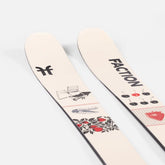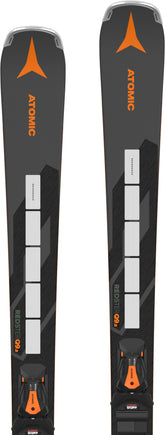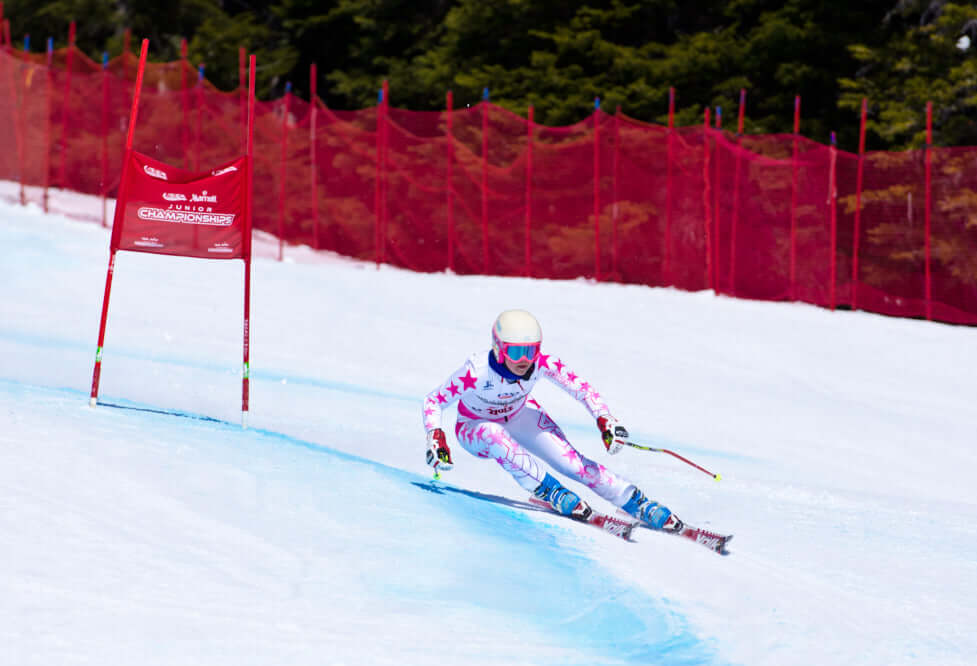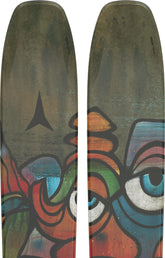When it comes to competitive skiing, every piece of equipment can make a significant difference in performance. One of the most debated pieces of gear is the ski race suit. These specialized suits are designed to provide a competitive edge by enhancing performance, offering protection, and allowing for unrestricted movement. But is investing in a ski race suit the right decision for you? This article will explore the various aspects of ski race suits, from their purpose and types to top brands and material technology, to help you make an informed decision.
Key Takeaways
- Ski race suits are essential for competitive skiing, offering performance enhancement, protection from the elements, and unrestricted movement.
- There are two main types of ski race suits: Downhill (DH) suits and Giant Slalom (GS) suits, each designed for specific types of races.
- Top brands in the ski race suit market include Spyder, Arctica Race, and POC, known for their quality and performance.
- Modern ski race suits are made from advanced materials like a polyester-spandex blend and are designed to be aerodynamic and meet FIS certification standards.
- Practical tips for wearing ski race suits include proper layering for warmth, incorporating body armor for protection, and regular maintenance to ensure longevity.
The Purpose of Ski Race Suits
Ski race suits, often referred to as speed suits or GS suits, serve a dual purpose: part clothing, part equipment. A properly fitting ski race suit allows for the wide range of unrestricted movement necessary for the dynamics of ski racing. These suits are designed to make racers more aerodynamic, which is crucial for achieving top speeds on the slopes.
Types of Ski Race Suits
When it comes to ski racing gear, choosing the right suit can make all the difference. There are two main types of suits for ski racing: DH suits and GS suits. Each type is designed with specific features to enhance performance in different racing events.
Downhill Suits
DH suits are worn for racing the speed events of downhill and super g skiing. They are not padded, so they have more stretch and can be worn tighter to be more aerodynamic. Because they have more stretch, they tend to fit a wider range of body shapes and sizes. A DH race suit can be worn for slalom skiing and giant slalom skiing as well, but the racer would need to wear separate body armor for protection.
Giant Slalom Suits
Giant slalom suits, often called GS suits, are designed for the technical events of slalom and giant slalom skiing. These suits usually come with built-in padding to protect against gates and impacts. The iconic adult GS race suit by Alpine Base & Edge is a great example—FIS-approved, durable, and comfortable with innovative features for peak performance.
Choosing the Right Suit
Selecting the right suit depends on the type of ski racing events you participate in. For speed events like downhill and super G, a DH suit is ideal. For technical events like slalom and giant slalom, a GS suit with padding is more suitable. Always consider the fit, comfort, and specific needs of your racing discipline when making your choice.
Top Brands in Ski Race Suits
Spyder
Spyder is a name synonymous with ski racing. Known for their cutting-edge technology and sleek designs, Spyder suits are a favorite among professional and amateur racers alike. Their suits offer a perfect blend of performance and style, making them a top choice on the slopes.
Arctica Race
Arctica Ski Race Suits have earned their place as the preferred choice among skiing enthusiasts. This is because we understand that each racer is unique, and so are their requirements. That’s why we offer various styles and sizes to ensure you find the ideal fit for your needs. When it’s time to hit the slopes, don’t compromise on your racing gear. Elevate your performance with Arctica’s Ski Race Suits – because it’s not just about the thrill of the race. It’s about having the right gear to conquer it.
POC
POC is renowned for its focus on safety and performance. Their suits are designed with the latest materials to provide maximum protection and aerodynamic efficiency. Whether you're a seasoned racer or just starting, POC offers suits that cater to all levels of competition.
For young competitive skiers, the youth pinnacle GS race suit by Alpine Base & Edge offers a high-quality, aerodynamic design with vibrant graphics for peak performance and style on the slopes.
Material and Fabric Technology
Polyester-Spandex Blend
Ski race suits are typically made from an 80% Polyester, 20% Spandex blend. This combination offers a balance of durability and flexibility, essential for high-performance racing. The blend ensures that the suit can withstand the rigors of alpine racing while providing the necessary stretch for unrestricted movement.
Aerodynamic Porosity
The performance level of a ski race suit is significantly influenced by the fabric's aerodynamic porosity. FIS certified suits have lower porosity, meaning less air penetrates through the suit, making it more aerodynamic. This is crucial for competitive racers aiming to minimize drag and maximize speed.
FIS Certification Standards
To be protected, an athlete now needs multiple layers under their race suit. There are the cut-resistant layers, a back protector, and possibly some additional padding. The fabric must pass the FIS porosity test, a stringent standard that ensures the suit meets the necessary aerodynamic and safety requirements. Only a few textile manufacturers have the capability to produce these specialized fabrics, making it a niche but critical market.
Practical Tips for Wearing Ski Race Suits
Layering for Warmth
When it comes to staying warm on the slopes, layering is key. Start with a moisture-wicking base layer to keep sweat off your skin. Add an insulating layer for warmth, and top it off with your ski race suit. Training shorts are a great investment to prolong the life of your ski race suit. Not only do training shorts help keep you warm, they protect your valuable ski racing suit from abrasive chairlifts and wear from gates or crashes.
Body Armor and Padding
Safety first! Incorporate body armor and padding to protect yourself from impacts. Look for gear that fits snugly under your suit without restricting movement. This is crucial for executing advanced ski racing techniques. Remember, the right padding can make a big difference in both safety and performance.
Maintaining Your Suit
Proper maintenance of your ski race suit ensures longevity and performance. Always follow the manufacturer's care instructions. Hand wash in cold water and air dry to maintain the fabric's integrity. Avoid harsh detergents and bleach. Keep these things in mind as you compare your old suit size to the one you are looking at purchasing and you'll have a great chance of nailing the fit!
A well-maintained suit not only looks good but also performs at its peak, giving you the edge you need on race day.
Real-World Experiences from Ski Racers
Athlete Testimonials
When it comes to competitive skiing, the feedback from athletes is invaluable. Many racers swear by their race suits, noting that they provide an edge in both training and competition. For instance, the U12s and up at some programs often wear speed suits even on training days. This practice has become a part of the culture in many ski clubs. On the other hand, some racers prefer to reserve their race suits for actual race days, citing the need to maintain the suit's condition.
Coaches' Insights
Coaches have a unique perspective on the use of ski race suits. They observe that while younger racers might wear their suits more frequently, older and more experienced athletes tend to be more strategic. They might wear standard ski suits for practice and save their race suits for competitions. This approach helps in preserving the suit's quality and ensuring peak performance during races.
Common Challenges
Wearing a ski race suit isn't without its challenges. One common issue is the cold. Many racers find these suits freezing, especially during untimed training sessions. Another challenge is maintenance. As one mom of two racers mentioned, frequent washing can be a hassle. Despite these challenges, the benefits of wearing a race suit, such as improved aerodynamics and protection, often outweigh the drawbacks.
In the world of downhill skiing, every advantage counts. From the fit to the fabric, every detail of a ski race suit is designed to enhance performance and provide that crucial edge on the slopes.
Conclusion
Deciding whether to invest in a ski race suit ultimately comes down to your personal goals and needs as a skier. These suits, often referred to as speed suits or GS suits, offer significant advantages in terms of aerodynamics and freedom of movement, which can enhance your performance on the slopes. With options like DH suits for speed events and GS suits for more general racing, there's a variety to choose from depending on your specific requirements. Brands like Spyder, Arctica Race, and POC provide high-quality options to suit different body types and preferences. While some racers may find these suits cold and opt for additional layers, the benefits in terms of performance and protection are undeniable. So, if you're serious about ski racing and looking to gain that competitive edge, a ski race suit could be a valuable addition to your gear.
Frequently Asked Questions
Why do ski racers wear a ski race suit?
Ski race suits, often called speed suits or GS suits, are worn instead of multiple layers of clothing and a jacket and pants. They provide protection from the elements, performance enhancement, and allow for unrestricted movement necessary for the dynamics of ski racing. They also make the racer more aerodynamic.
What are the different types of ski race suits?
There are two main types of ski race suits: Downhill (DH) suits and Giant Slalom (GS) suits. DH suits are worn for speed events like Downhill and Super G and are more aerodynamic with more stretch. GS suits are used for technical events and may require separate body armor for protection.
Which brands are popular for ski race suits?
Popular brands for ski race suits include Spyder, Arctica Race, Sync Performance Wear, Karbon, Louis Garneau, POC, Descente, Phenix, and Energia Pura.
What materials are ski race suits made from?
Ski race suits are typically made from an approximately 80% Polyester and 20% Spandex blend. The performance level is determined by the porosity of the fabric, with FIS-certified suits having lower aerodynamic porosity for better performance.
How can I stay warm while wearing a ski race suit?
To stay warm, you can wear long thermal underwear or layer with zip-off pants and a thin jacket over the race suit. Some racers also use body armor and padding for additional warmth and protection.
Are ski race suits FIS certified?
Some ski race suits are FIS certified, meaning they meet specific aerodynamic porosity standards set by the International Ski Federation (FIS). These suits are designed to be more aerodynamic, allowing less air to penetrate through the fabric.
